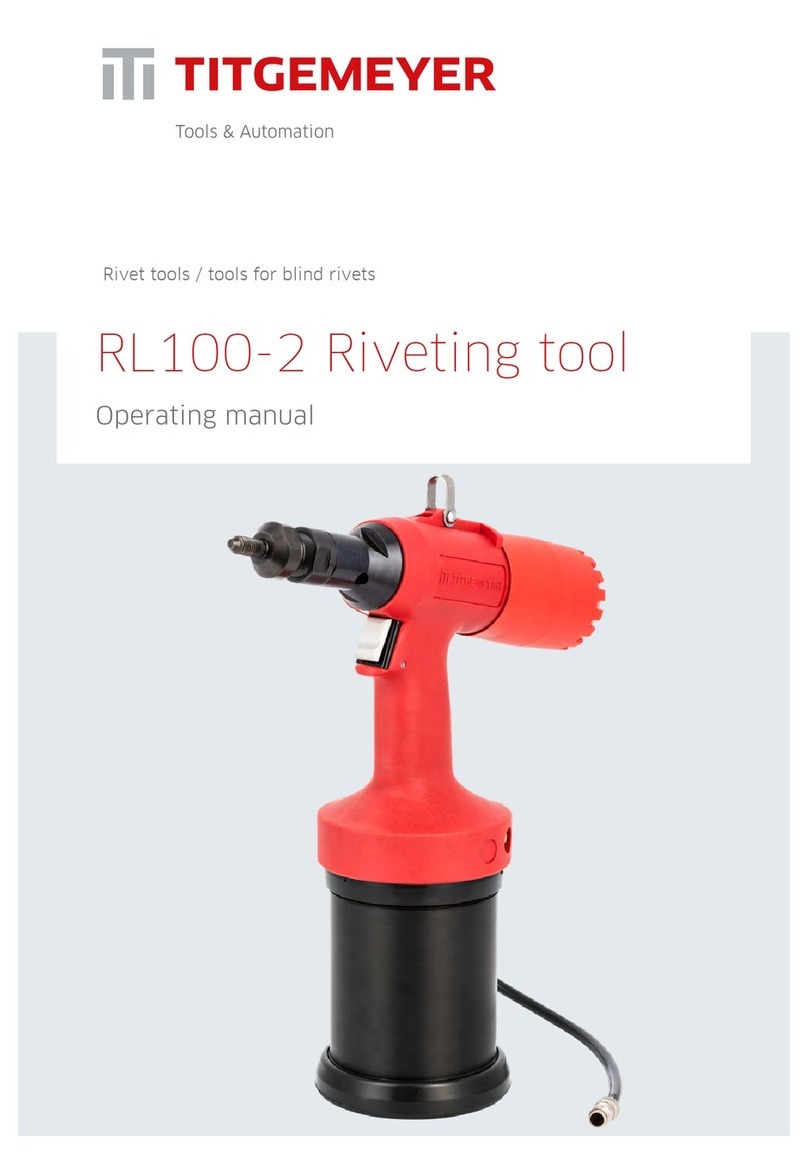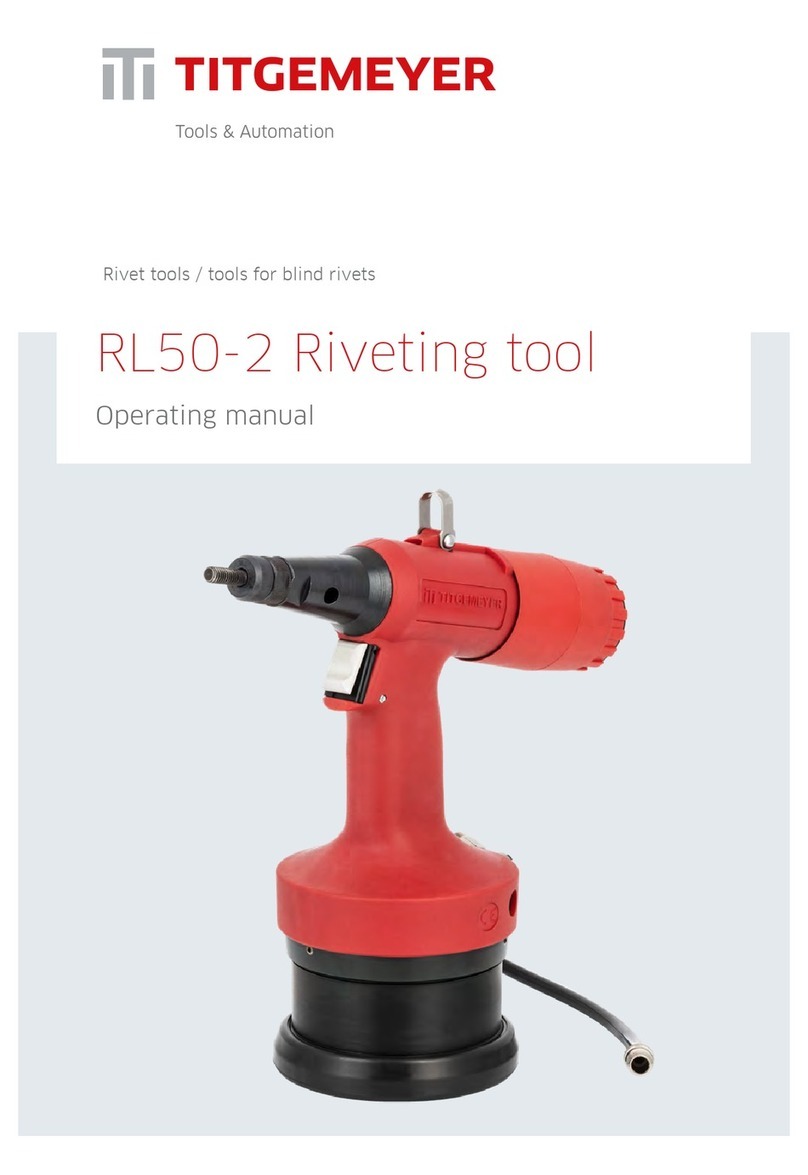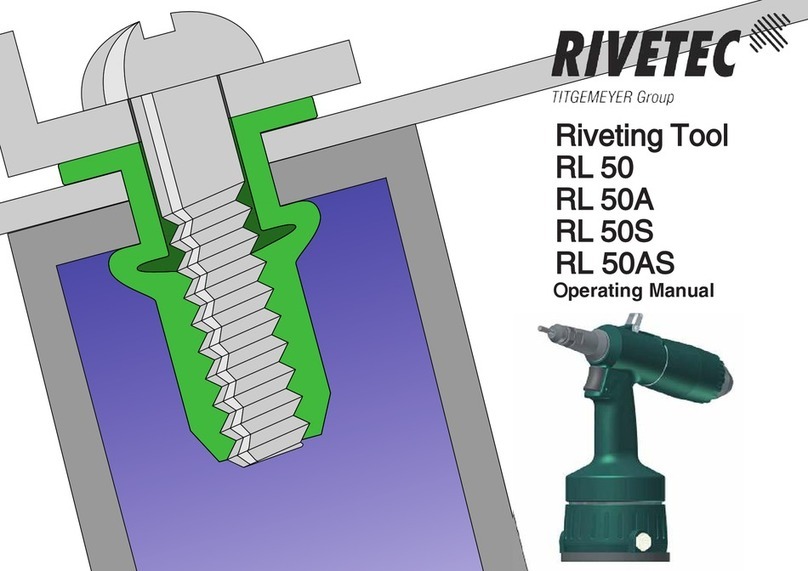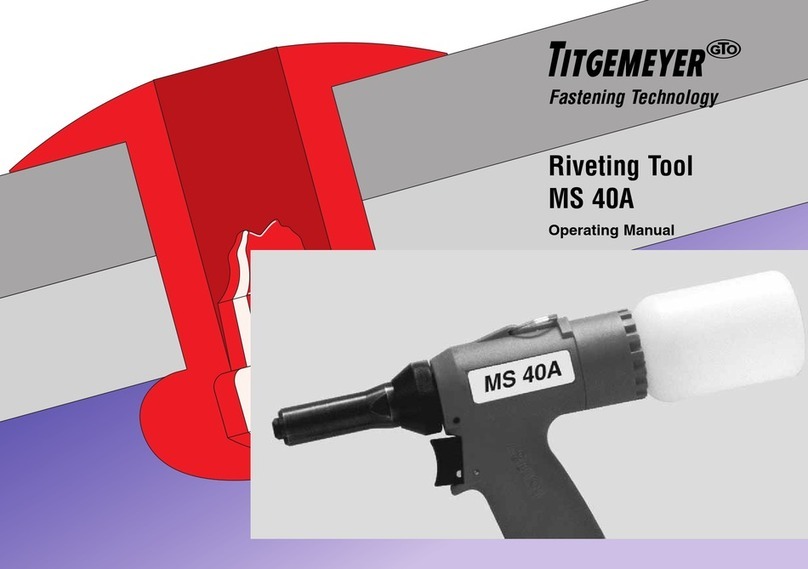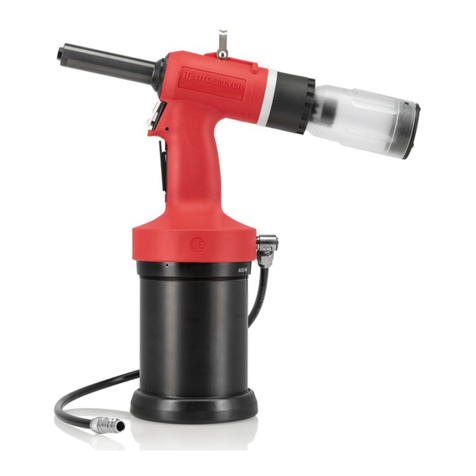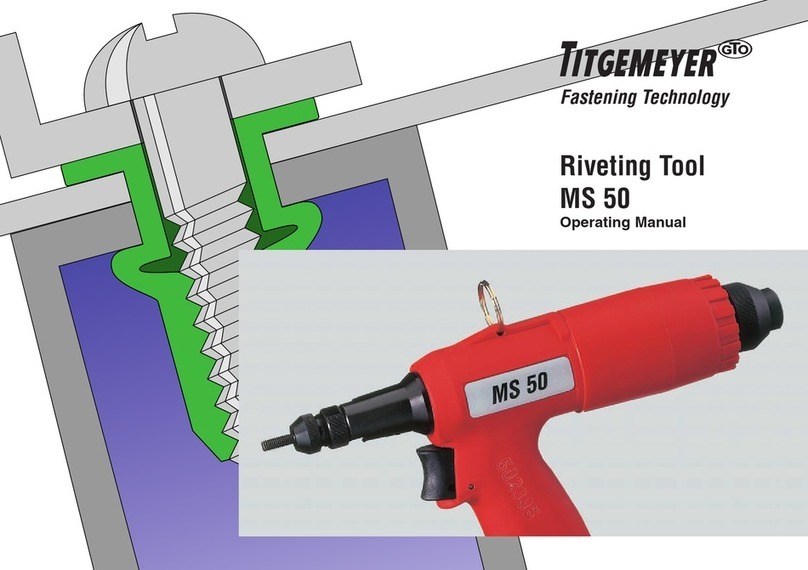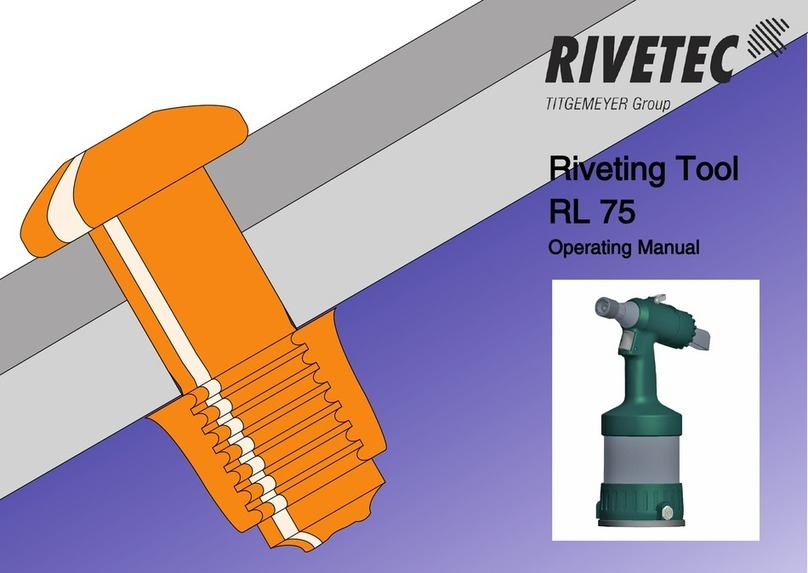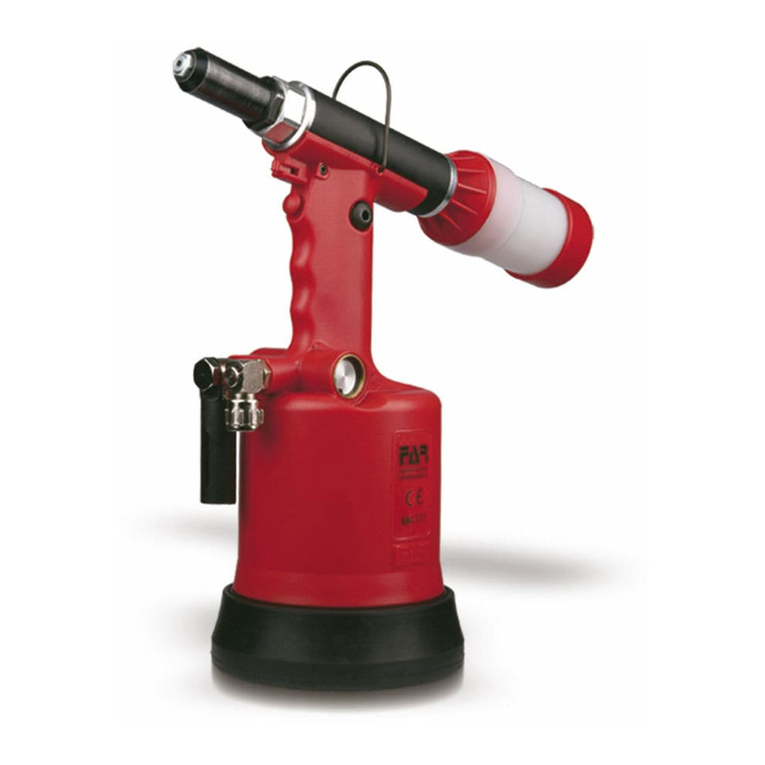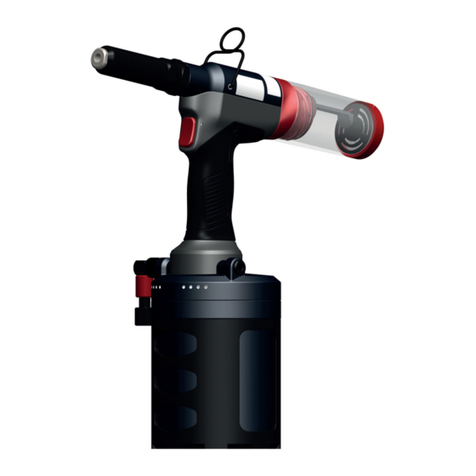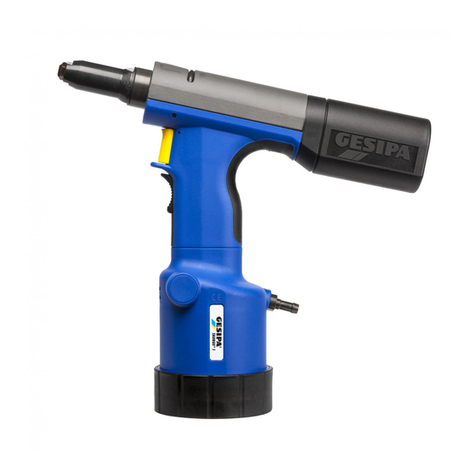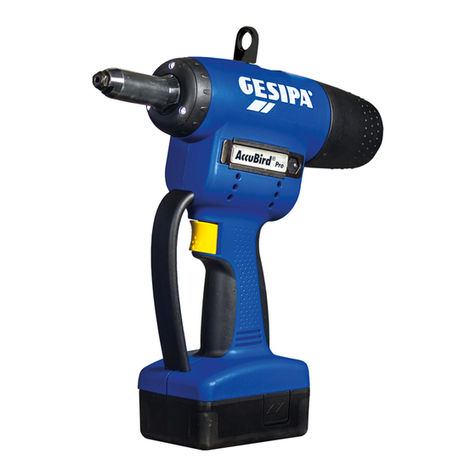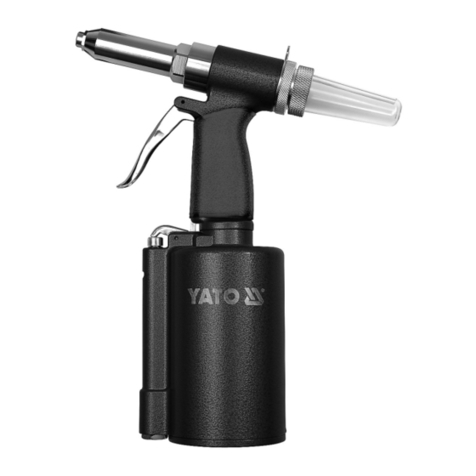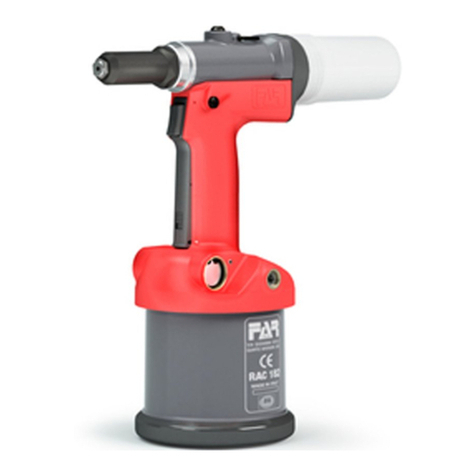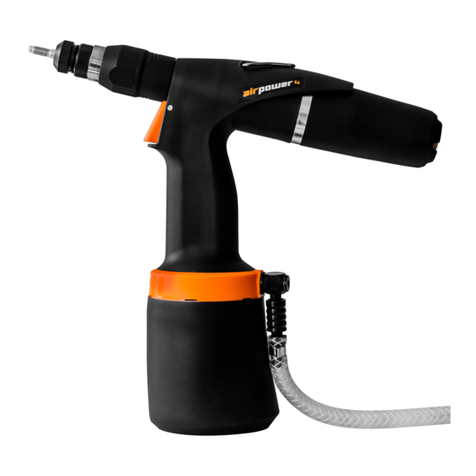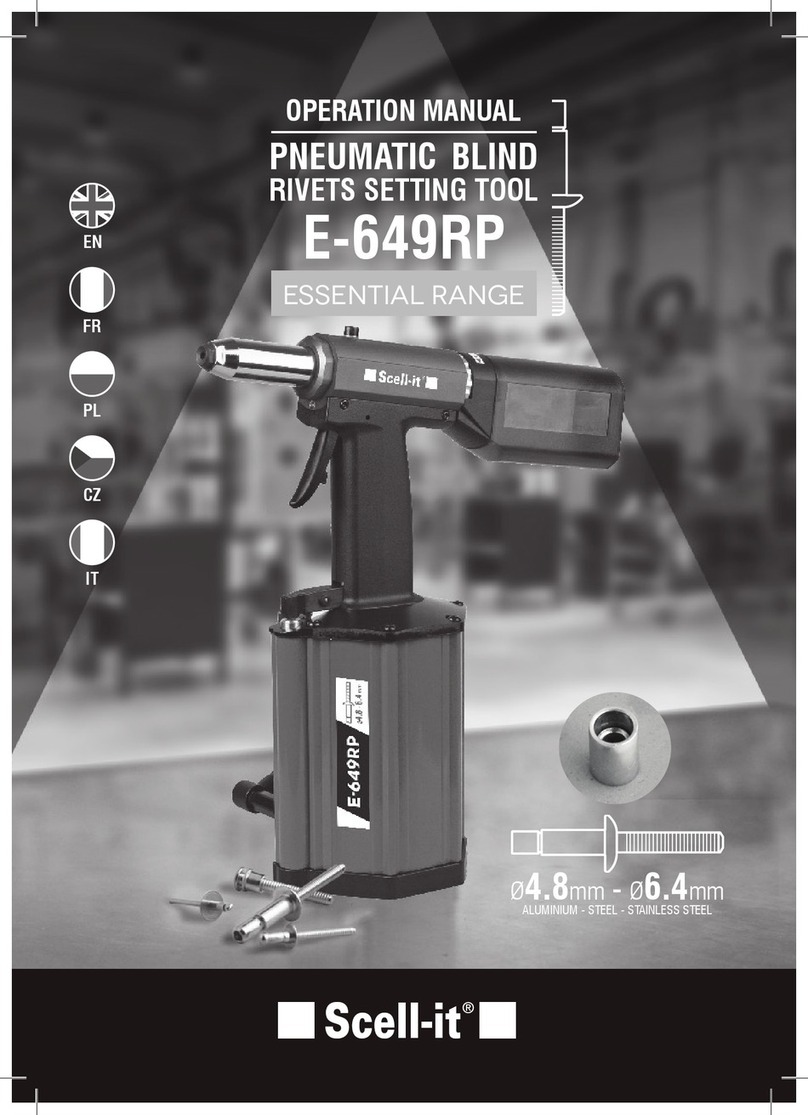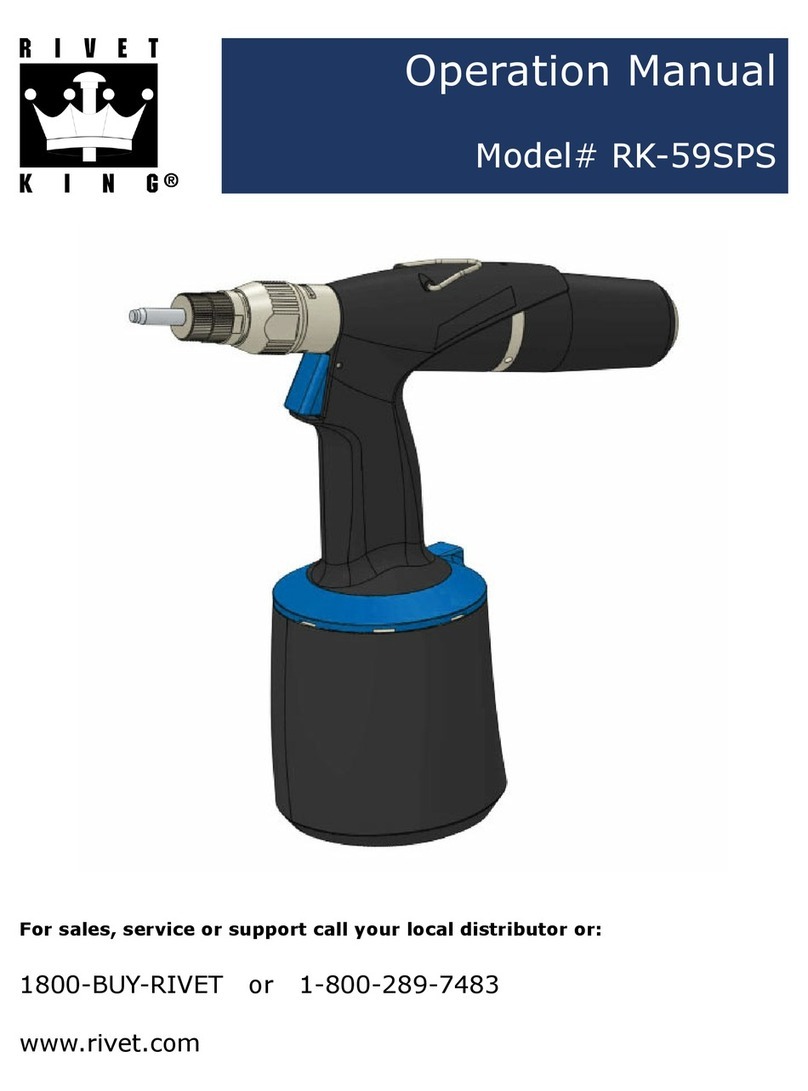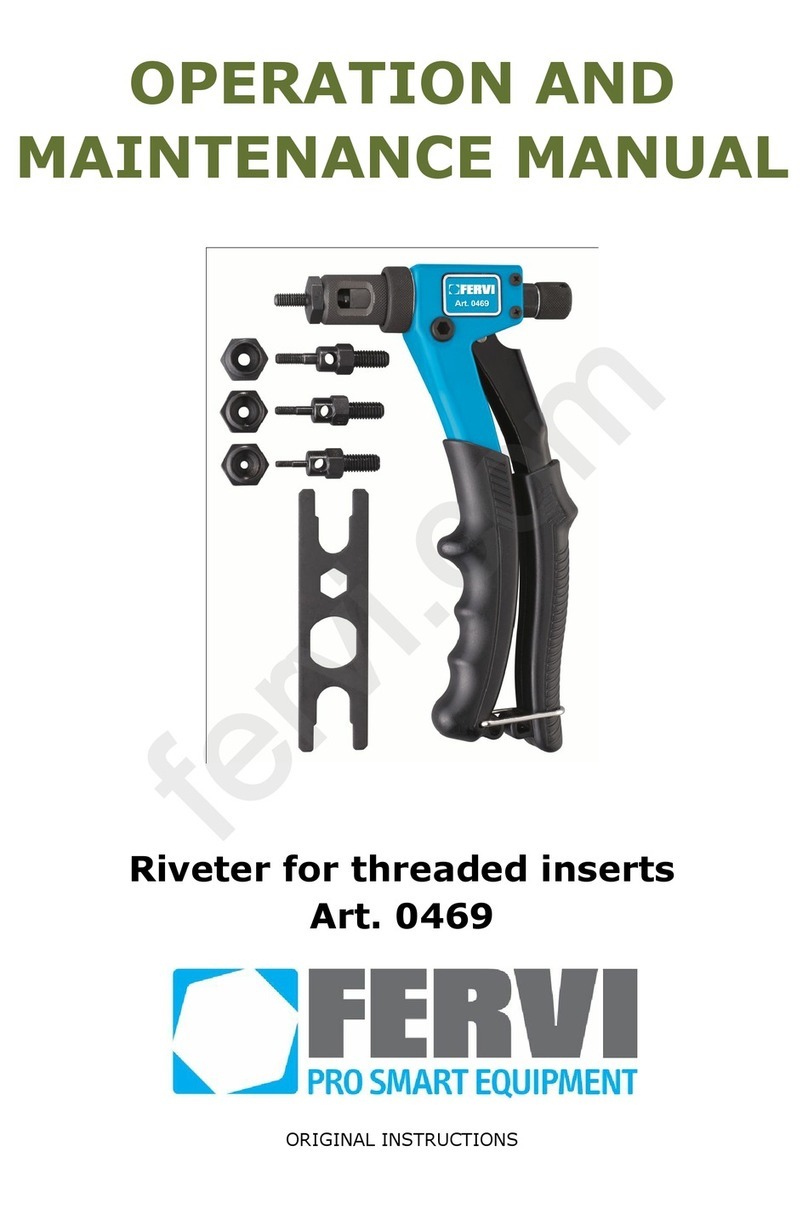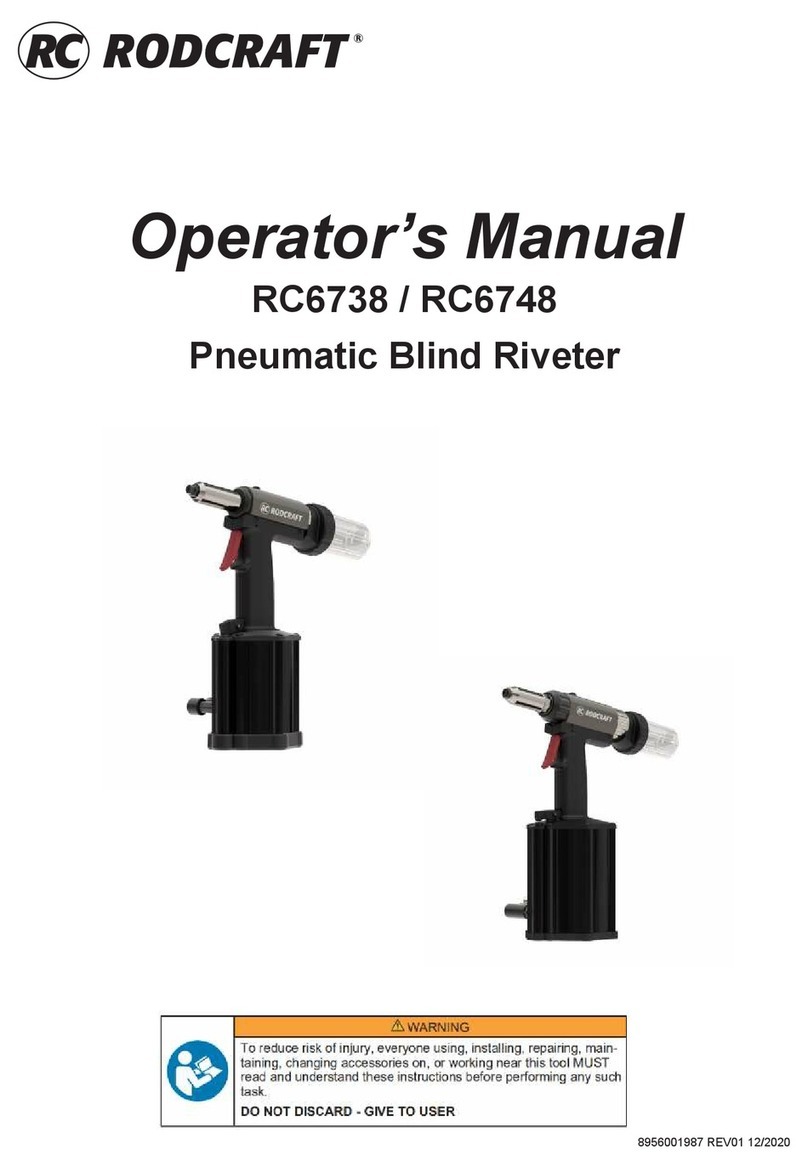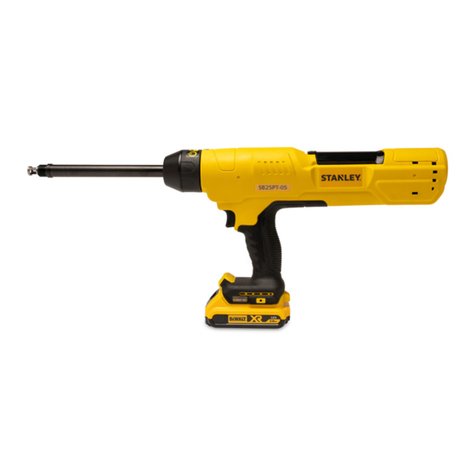
6
RL75-2 / Manual
Titgemeyer / 10344EN1121 / 1
English
5. Special safety advice
The riveting tool is exclusively designed
for setting Lockbolts and structural blind
rivets. The Customer bears individual re-
sponsibility for each and every change
of the riveting tool!
ATTENTION!
— Use the tool only after reading and un-
derstanding the operating instructions.
— Do not operate with the tool if you
are ill, under the inuence of drugs or
alcohol.
— Do not use the tool when it is incom-
plete and when it has visible mecha-
nical defects.
— Never aim the riveting tool at people
and do not rivet without material.
— Use the riveting tool only at working
temperature ranging from 5°C to 45°C.
— Never get over the maximum limit of
input air pressure of 7 bar
— In case the provided air pressure
exceeds the max of 7 bars, use appro-
priate equipment to reduce it.
— Use only ttings and hoses for an
approved operating pressure of 10
bar in pneumatics.
— Before adjusting or replacing compo-
nents, disconnect the tool from the
compressed air supply
— For processing rivets, use the recom-
mended pulling head for lockbolts or
jaw case and nosepiece for structural
blind rivets accordingly.
— Always use personal protective clothing.
— Tool not in current use must not be con-
nected to the compressed air supply
— Use the tool only for riveting
— Do not use the tool without assem-
bled rubber cover (5).
— The riveting tool must not be carried
or lifted by the air hose
ATTENTION!
Make sure that the riveting tool is
always equipped with the rubber cover
(5) for catching the rivet mandrels, other-
wise there is a high risk of injury.
NOTE
The Manufacturer bears no liability for
damages incurred due to incorrect repair
or due to using spare parts from other
sources.
The warranty is deemed invalid in case
of any repairs have been performed on
the riveting tool, leading to the damage
of the riveting tool or the seals.


